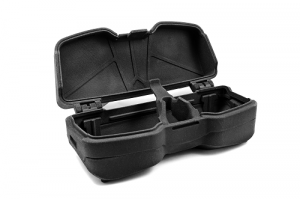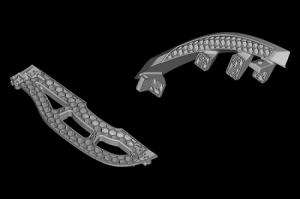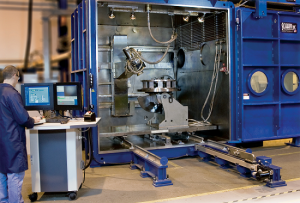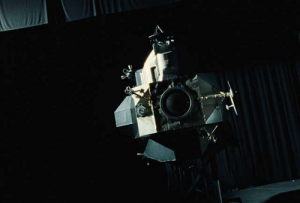GE News: Subsidiary AP&C Purchased New Land, GE Aviation Helping Airbus 3D Print Parts for RACER Aircraft
GE Additive‘s Canadian subsidiary, Advanced Powders & Coatings (AP&C), which produces and distributes metal powders for 3D printing, has been operating out of the Innopark Albatros in Saint-Eustache, Quebec since 2016. But last week, AP&C announced that it had purchased an additional piece of land at the location. This new location, just outside Montreal, is where the company will be concentrating its expansion activities in an effort to support its growth plans.
“We are thrilled to work with the dynamic Ville de Saint-Eustache team! Our firm is currently enjoying rapid growth and we need more space for our projects, along with a good location for drawing fresh talent. Innoparc Albatros meets both of these urgent needs,” said AP&C CEO Alain Dupont. “It is clear that AP&C’s future is right here in Québec and, in particular, Saint-Eustache!”
 This past Friday at the Saint-Eustache Town Hall, Dupont and Saint-Eustache Mayor Pierre Charron concluded the sale of the new, almost 40,000 square meter plot in the presence of Town Clerk Mark Tourangeau and notary Jean-Luc Pagé. AP&C already employs roughly 100 people at its Allée du golf facility in the Innoparc Albatros business district, but with this new addition, the company will be able to increase the amount of high added-value jobs in the area.
This past Friday at the Saint-Eustache Town Hall, Dupont and Saint-Eustache Mayor Pierre Charron concluded the sale of the new, almost 40,000 square meter plot in the presence of Town Clerk Mark Tourangeau and notary Jean-Luc Pagé. AP&C already employs roughly 100 people at its Allée du golf facility in the Innoparc Albatros business district, but with this new addition, the company will be able to increase the amount of high added-value jobs in the area.
“We are extremely proud that AP&C, the flagship of its industry, has decided to multiply its activities in Innoparc Albatros, thereby making big contributions to Saint-Eustache’s economy,” said Mayor Charron. “Innovation breeds more innovation and we are confident that AP&C’s increased presence will bring new businesses to our techno-park and encourage other hitech firms to come here.”
This new space will be a big help, as the company, which mainly serves the biomedical and aerospace sectors, distributes its powder products in over 40 nations.
But this expansion isn’t the only news GE is sharing. Speaking of aerospace, a new GE Reports has come out regarding the next-generation RACER helicopter hybrid by Airbus, which is the concept aircraft for the European Union’s Clean Sky 2 project.
“The future of flight is an ever-evolving topic ranging from new supersonic passenger jets to hybrid helicopter-like aircraft that fly more like a plane,” Yari M. Bovalino wrote in GE Reports.
“One recent example of such a flying machine is Airbus’ RACER.”
According to Airbus, the RACER, or “rapid and cost-effective rotorcraft,” can hit a cruising speed of over 400 km an hour, making it one of the fastest helicopters in the world. The RACER combines an airplane’s speed and distance capabilities with the helicopter’s versatility; i.e., it can take off and land vertically and also hover. This aircraft could bring about greener, faster, and less expensive air travel, which fits right in with the EU’s project goal of lowering the impact of aviation on the environment.
Over 600 entities in 27 countries are working together to develop more “environmentally benign” aircraft technology as part of the Clean Sky aviation banner. The goal is to lower nitrous oxide emissions by 80%, fuel consumption and carbon dioxide emissions by 50%, and external noise by 50%, when compared to their levels in the year 2000. Clean Sky is looking at the big picture to make a real difference, and working on things like improving wing aerodynamics.
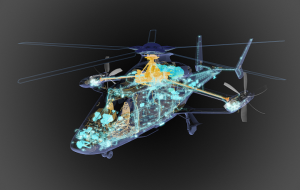 The RACER has a body like a helicopter, with a large rotor on top, but rather than a tail rotor, it has two skeletal wings, each with a backwards-facing propeller. One wing moves clockwise while the other moves counterclockwise, and the propellors work with the RACER’s low-drag wings to help it pick up speed while also maintaining lift.
The RACER has a body like a helicopter, with a large rotor on top, but rather than a tail rotor, it has two skeletal wings, each with a backwards-facing propeller. One wing moves clockwise while the other moves counterclockwise, and the propellors work with the RACER’s low-drag wings to help it pick up speed while also maintaining lift.
For a long time, aviation engineers have been looking for that special flight vehicle that’s fast, cost-effective, and agile at the same time…and it looks like the RACER is checking all of those boxes.
Tomasz Krysinski, head of research and innovation at Airbus Helicopters, said, “The RACER is 50 percent faster than a traditional helicopter, but has lower costs, and brings together several new technologies.”
In order to obtain the necessary technology to get the RACER flying, Airbus turned to England-based GE Aviation Integrated Systems and Avio Aero, an Italian GE Aviation company. The two are working on building the components and subsystems for the hybrid aircraft, such as the transmission system for the wing and rotor propellers and the RACER’s cradles, which connect the wings to the gearboxes.
 While traditional helicopter cradles were made with heavy parts that had been pre-made and were not cost-effective, the RACER’s cradles will be made with 3D printed casting molds, which helped lower cost, part count, and weight.
While traditional helicopter cradles were made with heavy parts that had been pre-made and were not cost-effective, the RACER’s cradles will be made with 3D printed casting molds, which helped lower cost, part count, and weight.
Paul Mandry, the engineering program leader for GE Aviation, said, “This is the first time we’ve ever designed such a complex cast component.”
The RACER also has some other new components that Airbus Helicopters and Avio Aero designed together, such as 3D printed heat exchangers for the transmission based on the experience that engineers gained while developing GE’s Catalyst engine. Because the craft is more lightweight, it will also save Airbus money on fuel costs over its lifetime, and will be much more environmentally friendly.
In order to take the RACER on its maiden flight in 2020, Airbus is planning to start assembling the first prototype later this year.
Discuss this news and other 3D printing topics at 3DPrintBoard.com or share your thoughts in the Facebook comments below.
3D Printing News Briefs: October 20, 2018
We’re starting with some information about a couple of upcoming shows in today’s 3D Printing News Briefs, followed by some business and aerospace news. Sinterit is bringing its newly launched material to formnext, while Materialise has announced what products it will be presenting. Registration is now open for AMUG’s 2019 Education and Training Conference. Moving on, Sciaky sold its EBAM and EB Welding System to an aerospace parts manufacturer, while final assembly has been planned for the Airbus Racer, which features a 3D printed conformal heat exchanger. The Idaho Virtualization Lab is a leader when it comes to 3D printing dinosaurs, and the recently released movie First Man used 3D printed models during filming.
Sinterit Launches New PA11 Powder
Desktop SLS 3D printing company Sinterit has launched a new material – PA11 Onyx – which it will be bringing to formnext next month, along with its Lisa and Lisa 2 Pro 3D printers. According to Sinterit, this is first powder that’s ready for use in desktop SLS 3D printers, and it delivers excellent thermal, chemical, and abrasive resistance, along with better flexibility and impact resistance. PA11 Onyx is a high performance, lightweight, polyamide-11 bioplastic produced from plant-based renewable resources. In addition, the material also has high elongation at break, which means that durable finished products, like a military glass case and custom casings, can be opened and closed thousands of times without getting damaged.
“Our clients use a lot of electronic devices, like Raspberry Pi, that need a proper, individually made housing that can endure in unfriendly conditions. They are looking for durable materials but also require some elasticity and high-temperature resistance,” said Sinterit Co-Founder Konrad Glowacki. “PA11 Onyx delivers that.”
Come visit Sinterit at booth G41 in Hall 3.1 at formnext, November 13-16, to see its 3D printers and newly launched powders, which also include Flexa Black and Flexa Grey TPU materials.
Materialise Announces formnext Product Introductions
Speaking of formnext, 3D printing leader Materialise will also be attending the event in Frankfurt, and has just revealed what new product introductions it will be displaying at its booth C48 in Hall 3. Some of the highlights include new plastic and metal materials, like Inconel, Polypropylene, and Taurus, automotive applications, and the Materialise Magics 3D Print Suite; this last includes a new Simulation Module, the E-Stage for Metal 1.1 automatic support structure generation upgrade, and Magics 23, the latest software release.
Additionally, there will also be presentations from Materialise partners and the company’s own experts, like Lieve Boeykens, the Market Innovation Manager for Materialise Software. Boeykens will be presenting on the TCT Stage about “Reducing Costs and Speeding Up the Validation of AM Parts” on November 15 at 4 pm. Visit the Materialise formnext site for updates.
AMUG Conference Registration Open
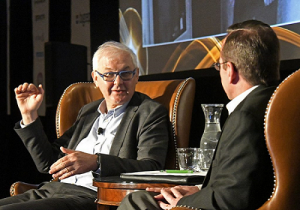 The Additive Manufacturing Users Group (AMUG) just announced that online registration is now open for its 2019 Education & Training Conference, which is now in its 31st year and will be held in Chicago from March 31-April 4. The conference is open to owners and operators of industrial 3D printing technologies for professional purposes, and welcomes designers, educators, engineers, plant managers, supervisors, technicians, and more to share application developments, best practices, and challenges in 3D printing. The program has been adjusted to include more hands-on experiences and training, and will include workshops, technical sessions, and even a new Training Lab. There will also be networking receptions, catered meals, the two-night AMUGexpo, a Technical Competition, and the fifth annual Innovators Showcase, featuring special guest Professor Gideon Levy, consultant for Technology Turn Around.
The Additive Manufacturing Users Group (AMUG) just announced that online registration is now open for its 2019 Education & Training Conference, which is now in its 31st year and will be held in Chicago from March 31-April 4. The conference is open to owners and operators of industrial 3D printing technologies for professional purposes, and welcomes designers, educators, engineers, plant managers, supervisors, technicians, and more to share application developments, best practices, and challenges in 3D printing. The program has been adjusted to include more hands-on experiences and training, and will include workshops, technical sessions, and even a new Training Lab. There will also be networking receptions, catered meals, the two-night AMUGexpo, a Technical Competition, and the fifth annual Innovators Showcase, featuring special guest Professor Gideon Levy, consultant for Technology Turn Around.
“As the AM community evolves, so will AMUG,” said Paul Bates, the President of AMUG. “We are excited to present the new program with the goal of continuing to act on our mission of educating and advancing the uses and applications of additive manufacturing technologies.”
Sciaky Sells EBAM and EB Welding System to Asian Aerospace Parts Manufacturer
Metal 3D printing solutions provider Sciaky, Inc. has announced that an unnamed but prominent aerospace parts manufacturer in Southeast Asia has purchased its dual-purpose hybrid Electron Beam Additive Manufacturing (EBAM) and EB Welding System. The machine will be customized with special controls that allow it to quickly and easily switch from 3D printing to welding. The system will be used by the manufacturer, remaining anonymous for competitive purposes, to 3D print metal structures and weld dissimilar materials and refractory alloys for said structures, as well as for other aerospace parts. Delivery is scheduled for the second quarter of 2019.
“Sciaky is excited to work with this innovative company. This strategic vision will allow this manufacturer to reduce operating costs by combining two industry-leading technologies into a single turnkey solution,” said Scott Phillips, President and CEO of Sciaky, Inc. “No other metal 3D printing supplier can offer this kind of game-changing capability.”
Airbus Plans Final Assembly for Racer
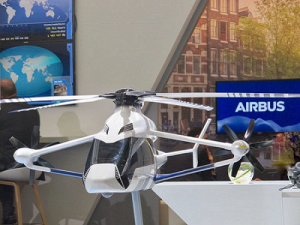
Scale model of the Airbus Racer on display at Helitech International 2018. The manufacturer is aiming for a first flight of the demonstrator in 2020. [Image: Thierry Dubois]
Together with partners of its Racer demonstration program, Airbus Helicopters explained that it definitely expects to meet performance targets, and complete the first flight of the compound helicopter on time in 2020. The 7-8 metric ton aircraft, in addition to a targeted cruise speed of 220 knots and 25% lower costs per nautical mile compared to conventional helicopters, will also feature several advanced components, including a three-meter long lateral drive shaft. Avio Aero was called in to 3D print a round, conformal heat exchanger for each later gear box, which will help achieve reduced drag.
The preliminary design review was passed last July, with final assembly targeted to begin in the fourth quarter of 2019. The flight-test program will likely be 200 flight hours, with the second part focusing on demonstrating that the Racer will be able to handle missions like search-and-rescue and emergency medical services. The program itself is part of the EU’s Clean Sky 2 joint technology initiative to help advance aviation’s environmental performance.
Idaho Virtualization Lab is 3D Printed Dinosaur Leader
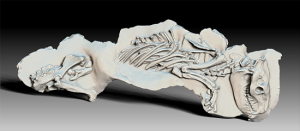 The Idaho Virtualization Laboratory (IVL), a research unit housed in the Idaho Museum of Natural History on the Idaho State University campus, has long been a leader in using 3D printing to digitize and replicate fossils and skeletons. Museum director Leif Tapanila said that IVL’s 3D printing program has been ongoing for the last 15 years, and while other labs in the country are more driven by research, the IVL is operated a little more uniquely – it’s possibly the only program in the US that goes to such great extent to 3D print fossils.
The Idaho Virtualization Laboratory (IVL), a research unit housed in the Idaho Museum of Natural History on the Idaho State University campus, has long been a leader in using 3D printing to digitize and replicate fossils and skeletons. Museum director Leif Tapanila said that IVL’s 3D printing program has been ongoing for the last 15 years, and while other labs in the country are more driven by research, the IVL is operated a little more uniquely – it’s possibly the only program in the US that goes to such great extent to 3D print fossils.
Jesse Pruitt, lab manager of the Idaho Virtualization Lab, said, “Everybody does a little bit of this and a little bit of that, but no one really does [everything we offer].
“We do our own internal research, we digitize our collections and we also do other people’s research as well.
“It’s not something you see at a smaller university. For this to exist at the level that it exists here is pretty remarkable in my mind.”
The IVL is also one of the only programs to have a large online database of the 3D models it creates, and works to spread knowledge about its 3D printing processes to students and researchers.
3D Printed Models for First Man Movie
While many movies swear by CGI to create special effects, there are some directors and production crews who still prefer to use old school miniatures and models. But old school meets new when 3D printing is used to make these models for practical effects. Oscar-winning director Damien Chazelle used some 3D printed miniature model rockets for his new movie First Man, which was just released a week ago and is all about Neil Armstrong and his legendary first walk on the moon. The movie’s miniature effects supervisor Ian Hunter, who won an Oscar for Visual Effects for Interstellar, was in charge of creating and filming the models, which included a one-thirtieth scale miniature for the giant Saturn V rocket and one-sixth scale miniatures of the Command/Service Module and Lunar Excursion Module.
“We had banks of 3D printers running day and night, running off pieces. We also used a lot of laser-cut pieces,” Hunter said about the Saturn V rocket miniature. “The tube-like shape of the rocket came from PVC piping, with the gantry made of acrylic tubing, along with many 3D printed and laser cut parts.”
The 3D printed model of the Saturn V rocket even made it into one of the trailers for the film, and the film itself.
Discuss these stories and other 3D printing topics at 3DPrintBoard.com or share your thoughts in the Facebook comments below.



